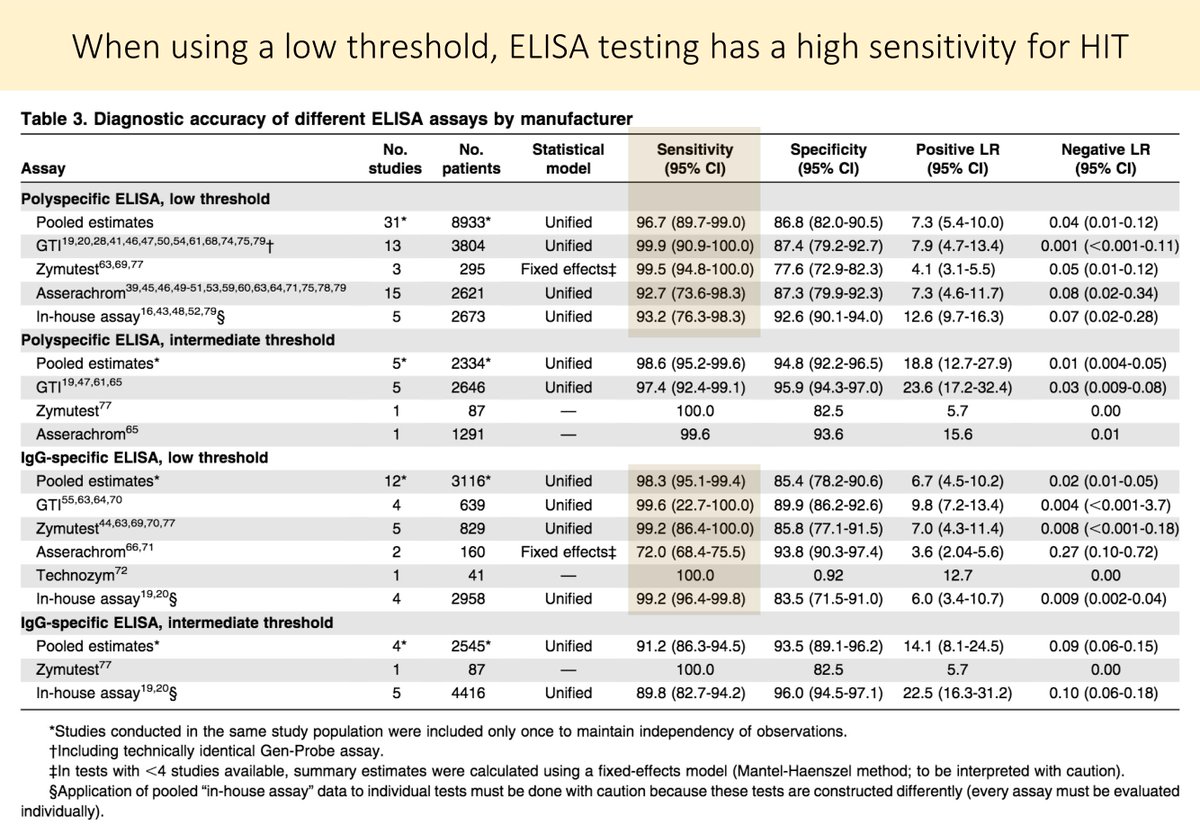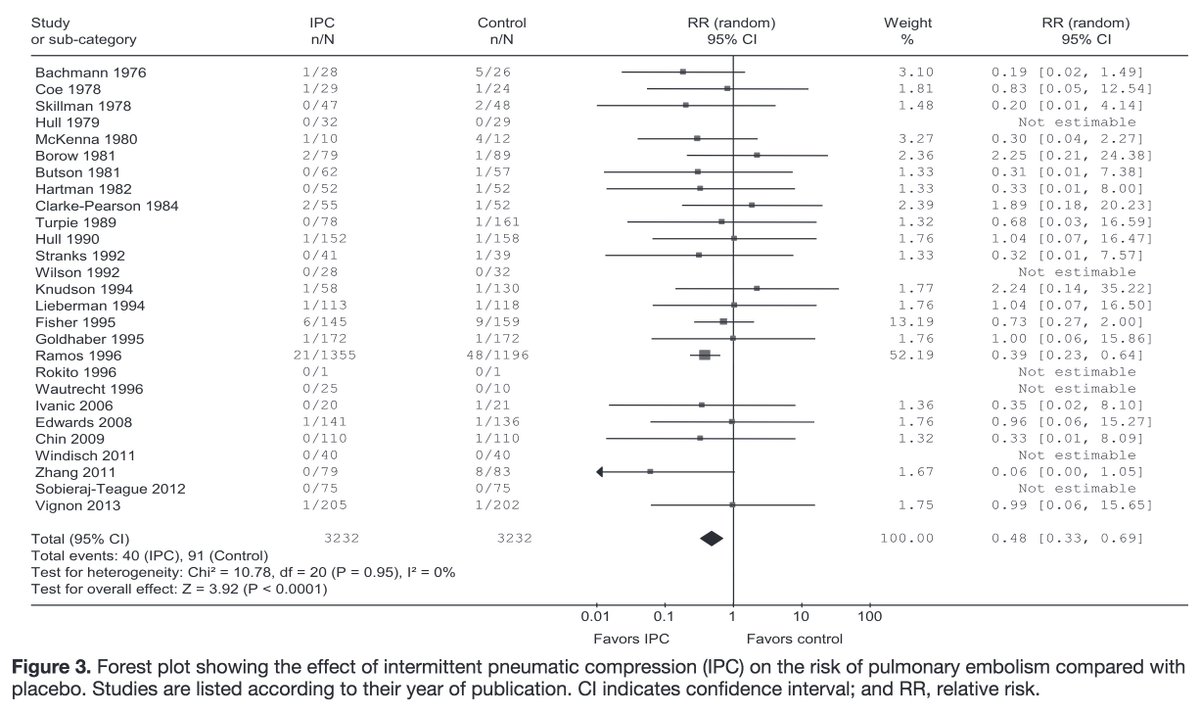Why is “HIT Testing in Low Probability Patients” a TWDFNR?
This tweetorial is a complement to the review published in the June 2019 issue of @JHospMedicine by authors Amanda Li, Lisa Hicks, and @efan75.
journalofhospitalmedicine.com/jhospmed/artic…
As the authors note, the ELISA test has a sensitivity >95% when the optical density threshold is low. The high sensitivity of the ELISA may make one inclined to use it liberally to evaluate for HIT.
ncbi.nlm.nih.gov/pubmed/26518436

But, there is another way one can effectively rule-out HIT: the 4Ts score.
A 2012 meta-analysis determined that the negative predictive value of a low probability 4Ts score was 99.8%. And, it didn't matter who "performed" the scoring.
ncbi.nlm.nih.gov/pubmed/22990018

The problem with ELISA testing for HIT is the lack of 100% specificity.
Again using a low optical density threshold, the specificity is more modest (85-90%).
ncbi.nlm.nih.gov/pubmed/26518436

Based on the following values, what percent of patients with a positive HIT ELISA would have HIT?
➜ Pre-test probability: 0.2% (based on a low-probability 4Ts Score) - see tweet 4
➜ Specificity: 90% (i.e., false positive rate of 10%) - see tweet 5
And, as the authors of the review note, the high false positive rate can result in more testing, unnecessary treatment with medications like argatroban, and inappropriate assignment of heparin allergies.
To read more about why HIT Testing in Low Probability Patients is a #TWDFNR, check out the full Open Access review by Amanda Li, Lisa Hicks, and @efan75 published in this month's @JHospMedicine
journalofhospitalmedicine.com/jhospmed/artic…














